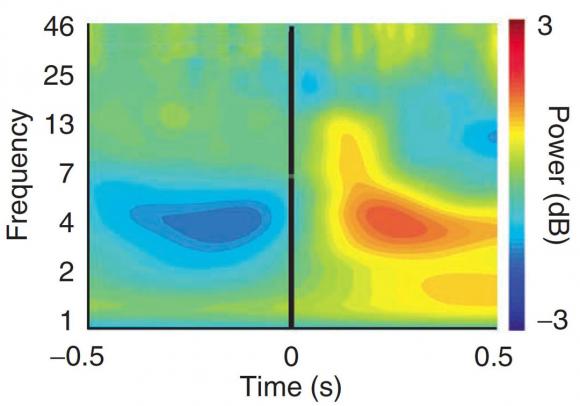PROVIDENCE, R.I. [Brown University] — People and rats may think alike when they’ve made a mistake and are trying to adjust their thinking.
That’s the conclusion of a study published online Oct. 20 in Nature Neuroscience that tracked specific similarities in how human and rodent subjects adapted to errors as they performed a simple time estimation task. When members of either species made a mistake in the trials, electrode recordings showed that they employed low-frequency brainwaves in the medial frontal cortex (MFC) of the brain to synchronize neurons in their motor cortex. That action correlated with subsequent performance improvements on the task.
“These findings suggest that neuronal activity in the MFC encodes information that is involved in monitoring performance and could influence the control of response adjustments by the motor cortex,” wrote the authors, who performed the research at Brown University and Yale University.
The importance of the findings extends beyond a basic understanding of cognition, because they suggest that rat models could be a useful analog for humans in studies of how such “adaptive control” neural mechanics are compromised in psychiatric diseases.
“With this rat model of adaptive control, we are now able to examine whether novel drugs or other treatment procedures boost the integrity of this system,” said James Cavanagh, co-lead author of the paper who was at Brown when the research was done and has since become assistant professor of psychology at the University of New Mexico. “This may have clear translational potential for treating psychiatric diseases such as obsessive compulsive disorder, depression, attention deficit hyperactivity disorder, Parkinson’s disease, and schizophrenia.”
To conduct the study, the researchers measured external brainwaves of human and rodent subjects after both erroneous and accurate performance on the time estimation task. They also measured the activity of individual neurons in the MFC and motor cortex of the rats in both post-error and post-correct circumstances.
The scientists also gave the rats a drug that blocked activity of the MFC. What they saw in those rats compared to rats who didn’t get the drug, was that the low-frequency waves did not occur in the motor cortex, neurons there did not fire coherently, and the rats did not alter their subsequent behavior on the task.
Although the researchers were able to study the cognitive mechanisms in the rats in more detail than in humans, the direct parallels they saw in the neural mechanics of adaptive control were significant.
“Low-frequency oscillations facilitate synchronization among brain networks for representing and exerting adaptive control, including top-down regulation of behavior in the mammalian brain,” they wrote.
In addition to Cavanagh, the lead authors are Nandakumar Narayanan, formerly of Yale and now of the University of Iowa, and James Cavanagh, formerly of Brown and now of the University of New Mexico. The senior authors are Michael Frank of Brown and Mark Laubach of Yale.
The National Institutes of Health (grants: K08 NS078100, MH080066-01, P01-AG030004-01) and the National Science Foundation (grants: 1125788 and 1121147) funded the research.

